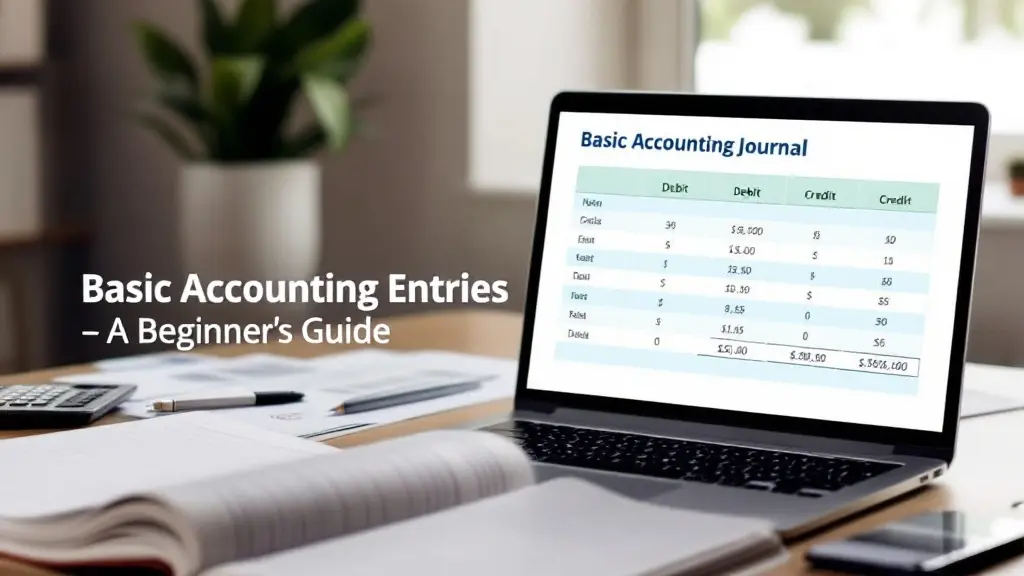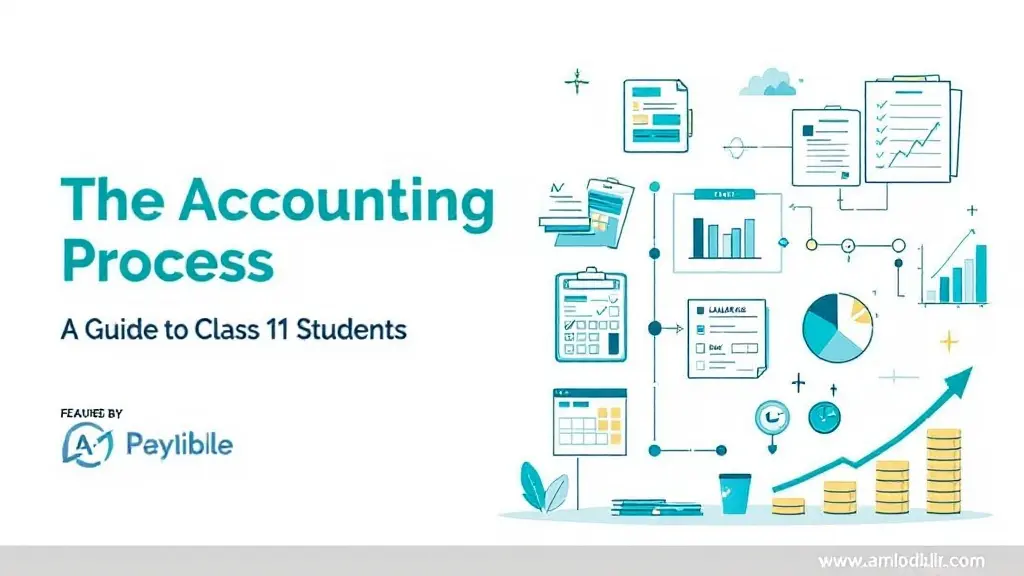Basic Accounting Journal Entries: A Beginner’s Guide
Table of Contents
Most Read
[fusion_dropcap class="fusion-content-tb-dropcap"]W[/fusion_dropcap]hen you’re new to accounting, the concept of journal entries can seem a bit intimidating. But once you understand the basics, it’s like learning a new language—one that helps businesses track every penny. Whether you’re a student, a startup owner, or just someone looking to brush up on the basics, this guide will walk you through everything you need to know about basic accounting journal entries in a simple and relatable way.
What Are Journal Entries in Accounting?
At its core, a journal entry is the building block of accounting. It’s the first step in recording any financial transaction of a business.
Each journal entry includes:
- Date of the transaction
- Accounts affected
- Amount debited and credited
- Brief description or narration
The main goal? To maintain accurate financial records using the double-entry accounting system, where every transaction impacts at least two accounts—one debit and one credit.
Understanding the Double-Entry System
Before diving into journal entries, let’s decode the double-entry system, which is the foundation of modern accounting.
In this system:
- Every debit must have a corresponding credit.
- The total amount debited always equals the total amount credited.
This method ensures the accounting equation remains balanced:
Assets = Liabilities + Equity
Let’s break that down with a simple example:
If a company buys furniture for ₹10,000 in cash, the Furniture account (an asset) increases, and the Cash account (another asset) decreases. So, one account is debited, and the other is credited—keeping everything in check.
Format of a Journal Entry
Here’s what a standard journal entry format looks like:
pgsqlCopyEditDate | Particulars | Debit (₹) | Credit (₹)
-----------|------------------------------------|-----------|------------
01-Apr-25 | Furniture A/c Dr. | 10,000 |
| To Cash A/c | | 10,000
| (Being furniture purchased for cash)
Let’s now explore some of the most common types of journal entries.
1. Opening Entry
When a business starts, it records the opening balances of assets, liabilities, and capital.
Example:
cssCopyEditCash A/c Dr. ₹50,000
Furniture A/c Dr. ₹20,000
To Capital A/c ₹70,000
(Being business started with cash and furniture)
2. Cash Transactions
Whenever cash is involved—either received or paid—it’s recorded using cash account entries.
a. Cash Received
Example:
cssCopyEditCash A/c Dr. ₹5,000
To Sales A/c ₹5,000
(Being cash sales made)
b. Cash Paid
Example:
cssCopyEditRent A/c Dr. ₹2,000
To Cash A/c ₹2,000
(Being rent paid in cash)
3. Credit Transactions
These occur when goods or services are exchanged without immediate cash.
a. Credit Purchase
Example:
cssCopyEditPurchases A/c Dr. ₹10,000
To Supplier A/c ₹10,000
(Being goods purchased on credit from XYZ Traders)
b. Credit Sale
Example:
cssCopyEditCustomer A/c Dr. ₹8,000
To Sales A/c ₹8,000
(Being goods sold on credit to ABC Ltd.)
4. Bank Transactions
When money is deposited to or withdrawn from the bank.
a. Cash Deposited in Bank
Example:
cssCopyEditBank A/c Dr. ₹15,000
To Cash A/c ₹15,000
(Being cash deposited into bank)
b. Cheque Received from Customer
Example:
cssCopyEditBank A/c Dr. ₹12,000
To Customer A/c ₹12,000
(Being cheque received from customer and deposited)
5. Contra Entries
These are transactions that affect both cash and bank accounts, and are usually recorded in the cash book only.
Example:
cssCopyEditBank A/c Dr. ₹5,000
To Cash A/c ₹5,000
(Being cash deposited in bank – contra entry)
6. Adjustment Entries
At the end of an accounting period, some adjustments are made for accruals, prepayments, and provisions.
a. Outstanding Expense
Example:
cssCopyEditSalary A/c Dr. ₹10,000
To Outstanding Salary A/c ₹10,000
(Being salary due for the month)
b. Prepaid Expense
Example:
cssCopyEditPrepaid Rent A/c Dr. ₹2,000
To Rent A/c ₹2,000
(Being rent paid in advance)
7. Depreciation Entries
Over time, fixed assets lose value. That’s where depreciation comes in.
Example:
cssCopyEditDepreciation A/c Dr. ₹1,000
To Furniture A/c ₹1,000
(Being depreciation charged on furniture)
8. Drawings by Owner
When the owner withdraws money or goods for personal use, it must be recorded.
Example:
cssCopyEditDrawings A/c Dr. ₹3,000
To Cash A/c ₹3,000
(Being cash withdrawn by owner for personal use)
9. Capital Introduced
When the owner adds more capital into the business.
Example:
cssCopyEditCash A/c Dr. ₹20,000
To Capital A/c ₹20,000
(Being additional capital introduced by owner)
Tips for Beginners
- Understand account types: Assets, liabilities, income, expenses, and capital.
- Practice regularly: The more entries you write, the faster you’ll grasp them.
- Keep narration simple: It helps during audits and reviews.
- Use accounting software if manual entries feel too tedious.
Common Mistakes to Avoid
- Not balancing debit and credit.
- Posting to wrong accounts—always double-check account names.
- Ignoring narration—it’s key to understanding the nature of the transaction.
- Forgetting the date—dates are crucial for record-keeping and analysis.
Why Journal Entries Matter
Accurate journal entries ensure:
- Transparent financial reporting
- Smooth auditing
- Legal and tax compliance
- Better decision-making for businesses
Even in the era of cloud-based accounting software, understanding the basics of manual journal entries provides clarity on how the software works behind the scenes.
Final Thoughts
Learning basic accounting journal entries is an essential skill for anyone in the finance or business world. It forms the backbone of accounting and helps track the financial health of any organization. Once you get comfortable with debits, credits, and account types, everything else becomes easier.
Take it slow, practice daily examples, and soon you’ll be recording journal entries like a pro!









